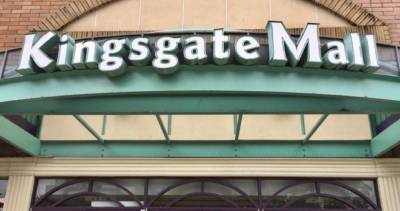The mobsters take L.A. again in Gangster Squad
BEVERLY HILLS — Gangster Squad is an old-style crime picture from the studio that invented them, complete with a “for hire” director and a cast of A-listers, including Josh Brolin, Ryan Gosling, and Emma Stone, who all look quite good smoking cigarettes while dressed in vintage outfits.
The film, which opens Friday (January 11), is a fictionalized retelling of Mickey Cohen’s reign of terror over Los Angeles, which ended thanks to a covert LAPD operation—the Gangster Squad—tasked with bringing him down.
“Some of the greatest movies ever made are gangster movies, and getting to make a gangster movie at Warner’s—which was, in a sense, built on these with stars like Edward G. Robinson and Jimmy Cagney—we felt really lucky to carry on the lineage of these films,” director Ruben Fleischer tells the Straight during a one-on-one interview at a Beverly Hills hotel.
The movie showcases the city’s sumptuous postwar aesthetic, but it also feels contemporary. Here, the late ’40s look very much like 2013, especially the action sequences, which contain plenty of the slow-motion bullet-tracking shots the genre now requires. (If he had had the means, Howard Hawks might have posted stills from the set of his 1932 Scarface—George Raft gazing out from under that signature high-crown fedora; Paul Muni posing with a Tommy gun in that pinstripe suit—to a Tumblr account. Fleischer has done this, along with a shot of a Dalmatian in a yarmulke, with some very nice pics of Gosling and Brolin in even nicer suits, and they are worth checking out.)
The 38-year-old director, who cites The Godfather—“or The Godfather II, depending on who I want to fight”—as his favourite gangster movie, says he hopes that his film will find a place in the pantheon as well.
To set the bar high, Fleischer showed the cast and crew three films during preproduction: The Untouchables, because there was a strong parallel to the mission of the actual Gangster Squad; Goodfellas, because he loved how intense Scorsese made it; and “the third one, L.A. Confidential, was a real inspiration because it was about the same period and had a similar kind of aesthetic,” he says. “It’s the other great L.A. movie of the period.”
“Oh, wait,” he adds with a grimace. “We shouldn’t include ourselves yet.”
Fleischer, a former history major from Washington, D.C., who worked his way up in Hollywood as an assistant before making his debut feature, the zombie rom-com Zombieland, knows he wasn’t the obvious choice for such a tough action movie.
“I think, for me, the challenge was getting the job in the first place,” the director confides. “I really had to sell them on my version, which was an entertaining, fun, stylized version of a gangster movie.” The studio, he says, was very clear about what they didn’t want: a throwback to a 1940s gangster film.
“They wanted it to be contemporary, and there was a lot of back-and-forth about the meaning of that word,” Fleischer says. In order to achieve this, he eschewed a desaturated, vintage look, instead using vibrant colours to depict L.A. in its postwar period.
“It was a very exciting time. The war is over; people had come out of the Depression; and the clothes, the cars, the music was all really popping in a very exciting way, so we wanted to channel all that energy into the film and make it fresh and fun.”
Fleischer had top talent behind the scenes as well as in front of the lens, which was exactly what he needed to achieve the veracity he wanted for his first period film.
“It was a dream come true,” he recalls. “Every day, I’d be driving to set and I could barely believe it. I mean, I’m a young filmmaker; I’ve only made three movies, and this is a huge thing for me. My DP [director of photography Dion Beebe, who shot Chicago and Memoirs of a Geisha] has won an Oscar, my costume designer [Mary Zophres] had done all the costumes for Coen brothers movies since Fargo. Everywhere I looked, there were these great people. I just felt lucky every single day.”
Fleischer enumerates several favourite elements that, he feels, made his film. Sean Penn’s performance, for one, plays like a study of 1930s movie gangsters mixed with modern movie-acting technique—terrifying, pathetic, and familiar all at once.
”We were informed by a lot of the classic elements of a gangster film. One key component is that you need an incredible villain and you need to love him,” Fleischer says. “So finding Sean to play Mickey Cohen made it for us. He was that perfect balance of someone you really love to hate. You can’t take your eyes off him, but he’s also so horrible.”
The period details were also crucial for Fleischer, a history buff, who turned his budget constraints into an advantage. Gangster Squad pays homage to the city’s glorious architectural past with almost 60 location shoots around Los Angeles. These include the Park Plaza Hotel, an art-deco landmark that becomes the site of an epic shootout, as well as Boardner’s on North Cherokee Avenue in Hollywood, a neighbourhood bar that has been in business since 1942.
Perhaps the best piece of visual historical trivia is the apartment where Ryan Gosling’s character lives, an Old Hollywood–style bungalow complex called the Garden of Allah that used to stand on Sunset Boulevard and was known for having the city’s largest swimming pool and hosting the likes of Greta Garbo, Humphrey Bogart, Dorothy Parker, and Errol Flynn, among many other notables.
“Even though the Garden of Allah doesn’t exist anymore, it’s meant as an homage,” Fleischer concludes. “We were really proud in this film to celebrate what still exists and pay respect to the past as well.”















Comments